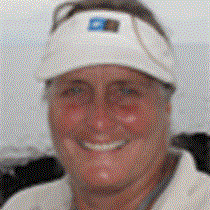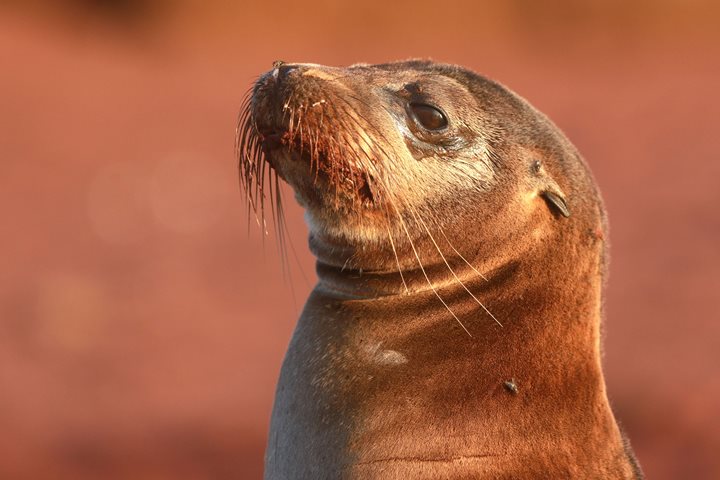Today we awoke at anchor off the coast of Isabela Island in Urbina Bay, Volcan Alecedo. This is an unusual area because it was uplifted in the mid-1950s when magma shifted underground and what once was sea floor has ever since been high and dry and exposed. We hiked in the morning after breakfast and were delighted to find several giant tortoises and colorful land iguanas. In the afternoon the Captain navigated north for 2 hours and we anchored in Tagus Cove. We had several options to choose from and we all saw marine iguanas, sea lions, sea turtles, penguins and cormorants, whether we chose to snorkel, go kayaking or take a Zodiac cruise along the coast. In the golden light of late afternoon two groups hiked up to view a crater lake and dramatic landscape to the north.
- Daily Expedition Reports
- 28 Dec 2016
Isabela Island, 12/28/2016, National Geographic Islander
- Aboard the National Geographic Islander
- Galápagos
Lynn Fowler, Expedition Leader
Born in Baltimore, Maryland, and one of seven children, Lynn grew up in various university towns where her father was a professor of physics. Lynn obtained her B.A. in biology from Earlham College in Richmond, Indiana, followed by a master’s degree i...
Read MoreShare Report
Related Reports
11/23/2022
Read
National Geographic Islander II
Isabela and Fernandina
Our day began with the chance to point out a lot of interesting geological features as we enjoyed Zodiac tours along a massive flank of Ecuador Volcano on Punta Vicente Roca. In the afternoon, we took a sunny walk on Punta Espinoza on Fernandina Island. We spotted many iguanas, and a bunch of sea lions hanging around, too.
11/22/2022
Read
National Geographic Islander II
North Seymour & Rabida Islands
Relatively small and low compared to neighboring Santa Cruz, North Seymour is located to the north of Baltra. The island is dry with predominantly low shrubs, like prickly pear cacti. The incense trees are bare during the dry season. Seabirds like frigatebirds and blue-footed boobies nest on the island, and sea lions rest on the sand when they are not fishing. Land and marine iguanas also live here. Rabida is in the middle of the archipelago and has a striking red sand beach. We observed a small colony of sea lions of all ages resting or nursing. Behind the beach, American flamingos nest in a brackish lagoon. This island is full of contrasts and wildlife that we enjoyed observing during this day of expedition.







